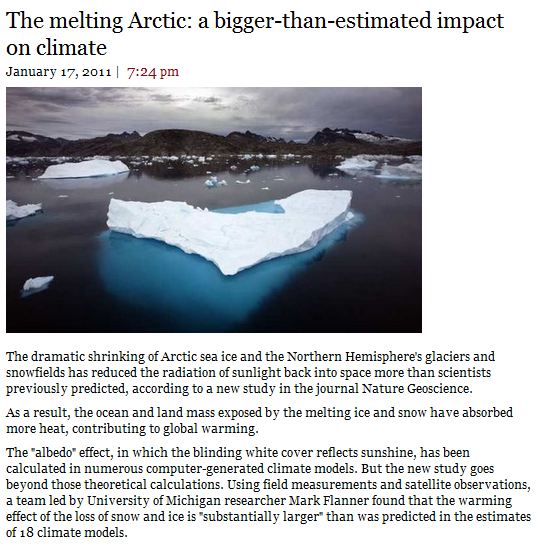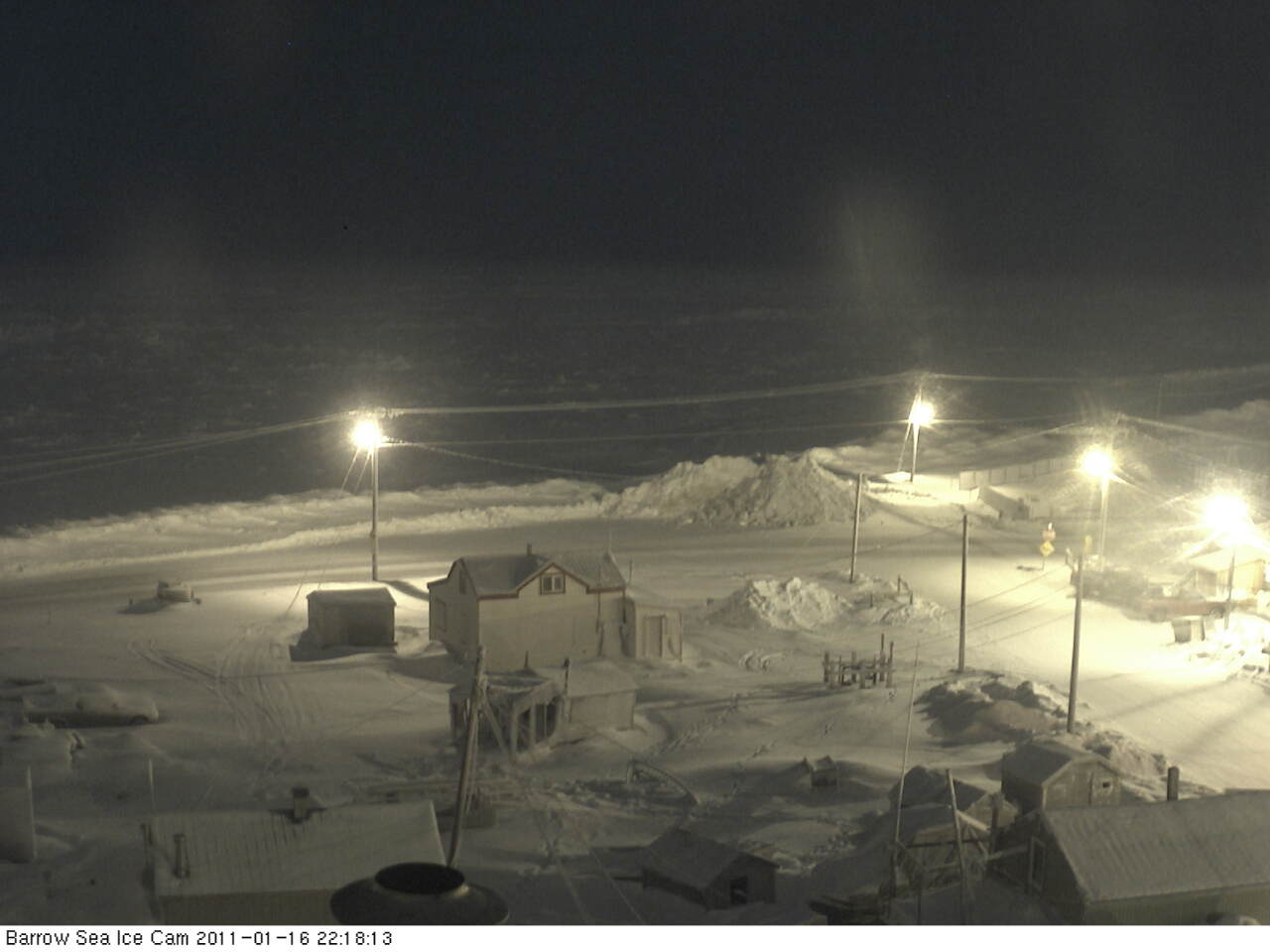http://latimesblogs.latimes.com/
You can see the “blinding white cover” in the Barrow webcam image. Note that bright sunlight is beating down on the ice and melting it.
http://seaice.alaska.edu/gi/observatories/barrow_webcam
The wicked heat in Barrow is the result of this melting.





Steve,
according to the article the study was not based on data solely from the middle of winter in just one year.
“Flanner and his colleagues measured ice and snow between 1979 and 2008. They found that ice and snow in the Northern Hemisphere are now reflecting on average 3.3 watts of solar energy per square meter back to space, a reduction of 0.45 watts per square meter over three decades.”
Do you have information that contradicts this?
What about the southern hemisphere? That excess sea ice 30 degrees from the pole doesn’t affect the radiative balance?
http://nsidc.org/data/seaice_index/images/s_plot_hires.png
As for loss of albedo it’s worth considering the role of clouds:
http://earthobservatory.nasa.gov/Features/ArcticReflector/arctic_reflector.php
http://earthobservatory.nasa.gov/Features/ArcticReflector/arctic_reflector2.php
“So in addition to changing sea ice, we can kind of guess that something must be happening in the atmosphere over the Arctic, too.” Clouds are bright, too, and an increase in clouds could cancel out the impact of melting snow and ice on polar albedo.”
http://earthobservatory.nasa.gov/Features/ArcticReflector/arctic_reflector4.php
“Although sea ice and snow cover had noticeably declined in the Arctic from 2000 to 2004, there had been no detectable change in the albedo measured at the top of the atmosphere: the proportion of light the Arctic reflected hadn’t changed. In other words, the ice albedo feedback that most climate models predict will ultimately amplify global warming apparently hadn’t yet kicked in.”
“According to the MODIS observations, cloud fraction had increased at a rate of 0.65 percent per year between 2000 and 2004. If the trend continues, it will amount to a relative increase of about 6.5 percent per decade. At least during this short time period, says Kato, increased cloudiness in the Arctic appears to have offset the expected decline in albedo from melting sea ice and snow.”
http://www.ldeo.columbia.edu/res/div/ocp/pub/gorodetskaya/irina_ipccpaper.pdf
“The predicted substantial decrease in Arctic summer sea ice concentrations during the twenty-first century may favor cloud formation, which should diminish or even cancel the ice-albedo feedback by shielding the surface.”
“Water droplets are more effective in reflecting and absorbing solar radiation than nonspherical, typically larger ice crystals (Dong et al. 2001).”
Have you considered what part soot has to play?
Nasa says “…aerosols likely account for 45 percent or more of the warming that has occurred in the Arctic during the last three decades.”
————-
————-
Please remember that Arctic sea ice extent has be on a downward trend since 1860.
So what is the Delta between Arctic and Antarctic ice and snow cover?
http://stevengoddard.wordpress.com/2010/11/23/polar-ice-radiative-feedback-cools-the-planet/
Apparently, that 0.45W translates into 49 states of snowcover. ….strangely similar to the late 70’s.
…. would that be a contradiction?
…but I’m sure, with their ouija board and a fog machine… they can explain it….
Any truly objective scientist would want to put this into some sort of perspective by examining long term trends and cycles, not to mention offset in the Antarctic.
The fact that they don’t seem to have done so must weaken their credibility.
“Mark Flanner found that the warming effect of the loss of snow and ice is “substantially larger” than was predicted in the estimates of 18 climate models.”
Given that global temps have been unchanged for 15 yrs or so, if the above assumption is correct, then some other factor must be cooling the earth.
Why is ocean heat content dropping in the Arctic?
Because it is warming up! Donchaknow! Cooling oceans mean Global warming!!!!! A 2C 5X5 grid of warm water off sets 95% of the oceans being 4C below normal
Do you think a climate scientist would stoop to actually measure something and find out ? Nah, they have MODELS with all the answers so they don’t have to get cold, wet and possibly die.